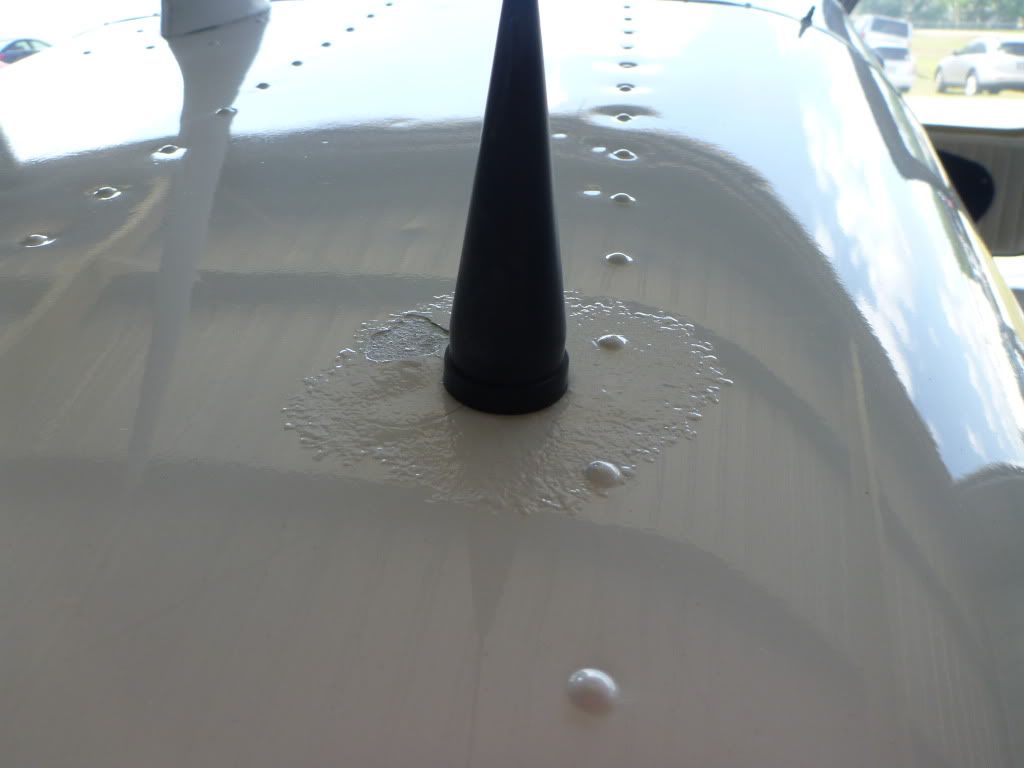Corrosion on Plane for Sale - How bad is this
I looked at a plane for sale this weekend and took the attached picture. Obviously water got under the paint in the area around the antenna, but I'm curious how bad this can be. I doubt I would ever be able to repair this without it looking bad until a full strip and paint was done. What's everyone's thoughts.



Comments
I've found a high corrosion area that should ALWAYS be regularly inspected are the steel fittings that attach the trailing edge of the wing roots to the fuselage.
When I bought my 1968 Cherokee in 1990 I found light corrosion there. My IA simply wanted me to clean off the visible corrosion from the steel fittings, prime, and paint. These fittings are under the rear seat, usually. They were probably never an issue in the 1970's when my airplane saw most of it's heavy usage, but as the years mount, corrosion creeps up on us. Don't let corrosion scare you, but don't ignore it either. Acknowledge it and deal with it, and you will be fine.
But if you are pulling a fuel tank and find corrosion of the spar, big red flags should be going off. Corrosion here is nothing to sneeze at. My plane, at nearly 45 years old has a spar that is clean as a whistle. Lucky it has almost ALWAYS been stored in a hangar.
Take care, and happy shopping!
Charley
A & P, Pilot, and POTATO FARMER
(But not a Potato DRIVER. But I have to admit the Apache is cute. My Dad had many Apache stories to tell...)
You did say this aircraft was for sale.. that in itself concerns me. While this corrosion may be nothing if the aircraft came into the hangar for an annual it would not be expected on one for sale. If I were doing the pre-purchase I would be very concerned.
Obviously the A&P would be looking very hard at the corrosion protection system for the aircraft, in this case it appears minimal. Not a good look at all.
Not only has the corrosion become well established and spread, there would appear to have been nothing done about it.
The way it has easily lifted the paint in every direction worries me also. I am doubting the pre-treatment process.
The Cessna 100 Series SID's were published this week. it is pretty obvious what the manufacturers are thinking about corrosion damage on a 40 year old aircraft.
Now is the time to get stuck in with the CIC's and anything else you can come up with to prevent any form of corrosion gaining momentum.
If you have not yet bought a machine you should really have a good look at the latest Piper Service Instructions, the revised inspections in the Maintenance Manual, FAA SAIB's and even the Cessna SID's.
Some of the GA fleet have a lot of work to be done on them in years to come. Structural damage will finish off a portion of the fleet.
In my post I was merely saying "OK, here is the corrosion in this particular area, and what can we do about it?"
You all have a nice day!
I would be hesitant to say that there is a fault with the entire airframe or it is a reflection of previous maintenance (or lack there of).
Good luck, hope that helps!